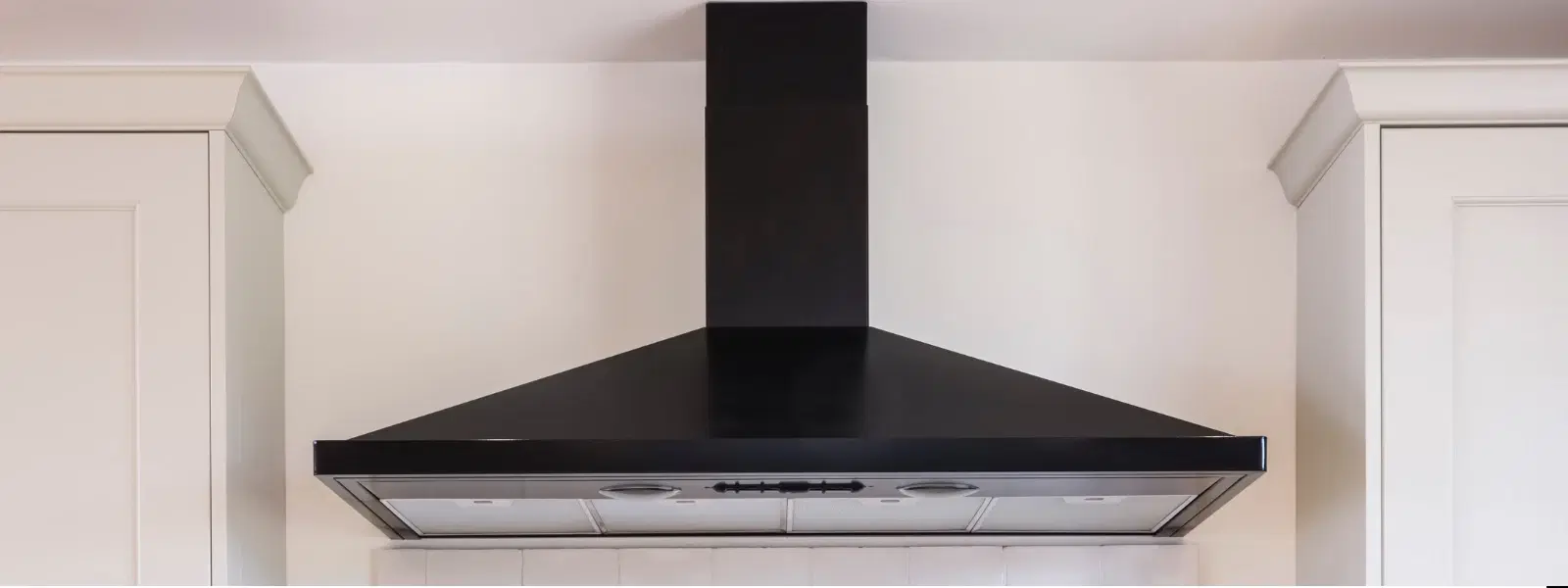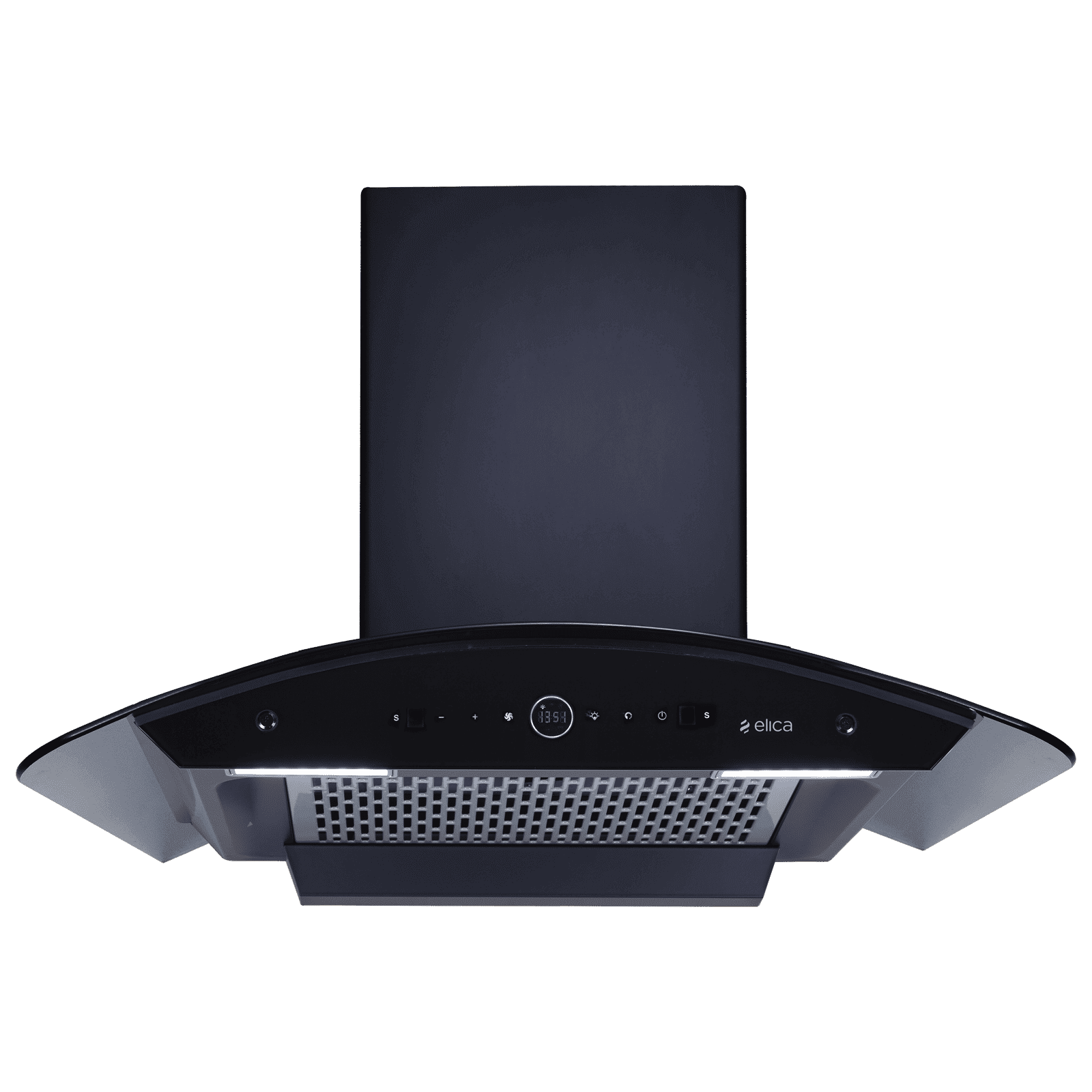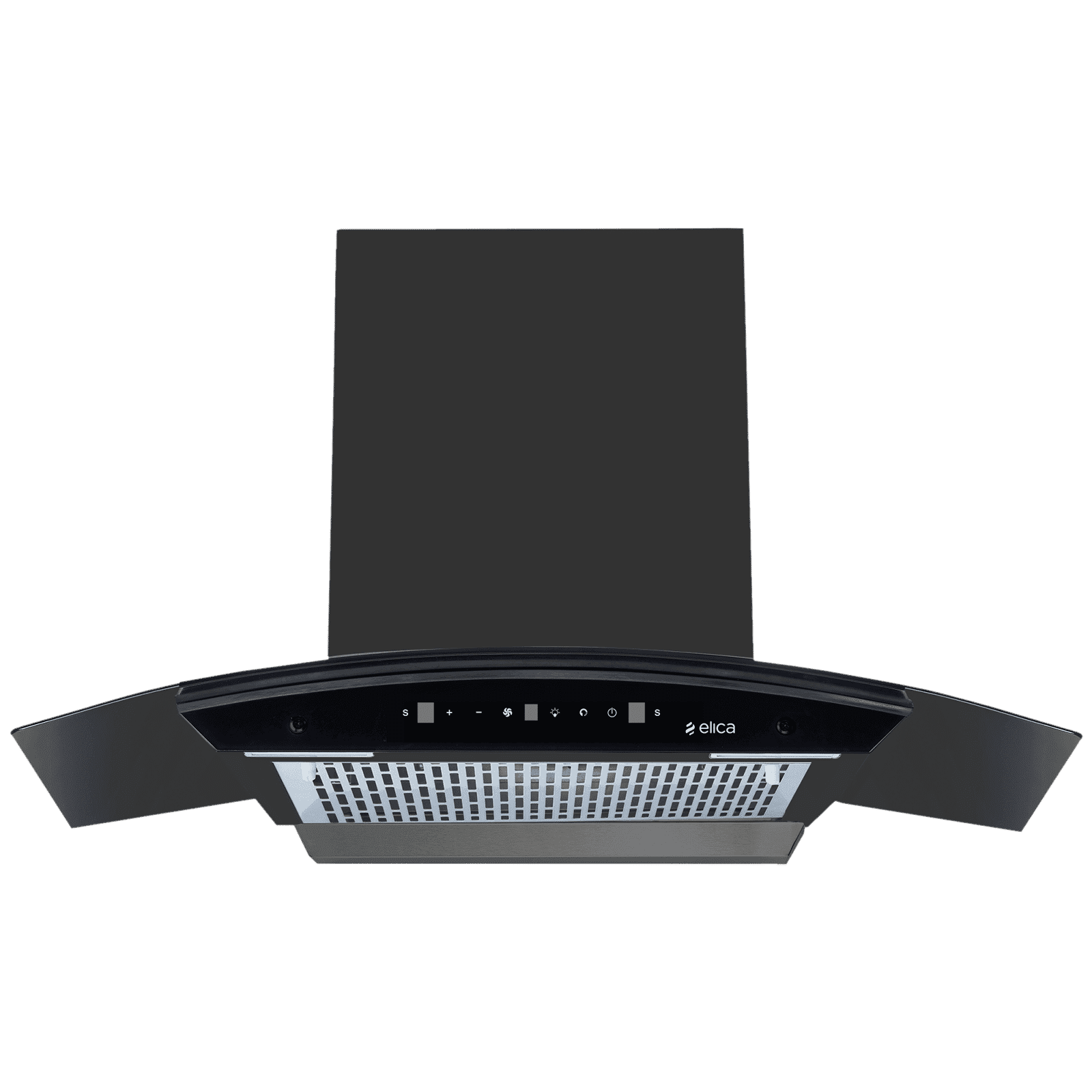
Home Appliances
•04 min read

Buy elica BFCG 600 HAC LTW MS NERO 60cm 1350m3/hr Ducted Auto Clean Wall Mounted Chimney with Touch Control Panel (Black) online at best prices from Croma. Check product details, reviews & more. Shop now!
Did you know that choosing the wrong Kitchen Chimney dimensions can impact both its performance and your kitchen’s overall look? When upgrading your kitchen or installing a chimney for the first time, getting the size right is crucial. In this guide, we will explore why chimney dimensions matter, discuss standard chimney sizes, and share practical tips for installation to ensure efficient suction, proper ventilation, and style. By the end, you will be equipped with clear insights on selecting the ideal chimney dimensions that suit your kitchen layout and cooking habits.
Choosing the right Kitchen Chimney dimensions is more than just a matter of aesthetics—it directly affects suction and ventilation efficiency. A chimney that is too small for your cooking range may fail to capture smoke and odours effectively, while an oversized unit might not align well with your space, leading to design inconsistency. Ensuring the chimney is well-proportioned to your stove and overall kitchen space guarantees optimal performance and a harmonious look.
Often, there is a belief that bigger is always better or that a one-size-fits-all approach works no matter the size of your kitchen. However, the reality is that each kitchen has unique dimensions and cooking requirements. It is important to understand that the right kitchen chimney dimensions should complement your stove size and kitchen layout, not dominate them.
When it comes to standard chimney sizes, typical dimensions such as 60cm and 90cm have become popular choices in many households. A 60cm kitchen chimney works well for most two to four burner stoves, where compact design meets functionality. Meanwhile, a 90cm chimney may offer better coverage and enhanced suction for larger cooking ranges or more spacious kitchens.
For those operating in smaller kitchen spaces, compact chimneys are an excellent option. These units are designed to save space by blending seamlessly with your kitchen interiors while still providing effective performance. Whether you have a compact setup or simply desire a sleek appearance, understanding kitchen chimney dimensions tailored for smaller spaces ensures both form and function are maintained.
Your kitchen’s dimensions—including its length, width, and height—play a significant role in determining the suitable chimney size. Accurately measuring your kitchen space is essential: note the distance from your stove to walls and kitchen cabinets to make an informed decision. Remember, an improperly sized unit can hinder airflow and reduce overall suction efficiency.

Buy elica PRO PLUS FL BLDC 75cm 1600m3/hr Ducted Auto Clean Wall Mounted Chimney with Motion Sensor Control (Black) online at best prices from Croma. Check product details, reviews & more. Shop now!
The number of burners and the frequency of your cooking also influence which chimney dimensions will work best. For instance, a two burner stove might pair perfectly with a 60cm chimney, whereas a larger four burner unit may benefit from a wider 90cm model. Assessing your cooking habits will help you decide if you need a more robust chimney to manage higher volumes of smoke and fumes during hectic cooking sessions.
The design and size of a chimney directly impact its suction power. Effective ventilation depends on selecting the right chimney dimensions that align with your kitchen’s area of use. A well-fitted chimney guides fumes upward efficiently, ensuring a smoke-free environment. Consider the chimney’s suction capacity and choose a unit that offers enhanced performance, especially during heavy cooking periods.
Pro Tip from Tata Neu
Always ensure the chimney is wider than your stove for maximum suction efficiency. For a 60cm stove, opt for a 90cm chimney for optimal performance.
One of the most significant factors for effective performance is the installation height. Ideally, your kitchen chimney should be installed 25–30 inches above the stove. This spacing ensures that smoke and fumes are efficiently drawn up while also providing ample clearance for safety. Proper chimney height enhances suction capacity and assures safe use around your cooking area.
Another crucial aspect of kitchen chimney installation is proper alignment with other kitchen features. Aligning the chimney with your stove and surrounding cabinetry enhances the overall appearance, while strategic duct placement ensures optimal airflow. It’s advisable to consult professional installation tips to achieve a seamless look and functional efficiency that meets your kitchen’s specific requirements.

Buy elica WDFL 900 BLDC HAC LTW MS NERO 90cm 1500m3/hr Ducted Auto Clean Wall Mounted Chimney with Motion Sensor Control (Black) online at best prices from Croma. Check product details, reviews & more. Shop now!
Not all kitchen chimneys are designed equally. For instance, wall-mounted, island, and built-in chimneys have dimensions that vary slightly depending on their installation methods and intended functionality. Wall-mounted units might suit kitchens with limited space, whereas built-in chimneys can blend naturally with your kitchen’s overall design, achieving both style and efficiency.
When comparing chimney size options, it’s useful to consider a textual comparison chart to judge which dimensions work best for your setup. For a standard stove, a 60cm chimney can cover basic needs, while a 90cm unit might be preferred for larger stoves or for ensuring enhanced suction in kitchens that see heavy usage. Whether you require a compact chimney for small kitchens or a larger unit for spacious areas, understanding these dimensions helps you make a balanced decision.
Standard kitchen chimneys typically come with widths of 60cm and 90cm, suitable for most kitchens.
The best size depends on your stove width and kitchen size. For a two to four burner stove, a 60cm chimney is usually ideal; for larger stoves, consider a 90cm option.
It is recommended that the chimney be positioned 25–30 inches above the stove to ensure proper suction and safety.
Most chimney pipes feature a diameter of around 6 inches (15cm), which is standard for efficient venting.
In summary, selecting the right kitchen chimney dimensions is essential for ensuring optimal functionality, enhanced efficiency, and a pleasant aesthetic in your kitchen. Whether you have a compact setup or a large cooking area, factors such as kitchen size, stove width, cooking habits, and installation height all contribute to a well-executed chimney installation. Employing these insights will not only improve your kitchen’s performance but also elevate its overall design. Explore more home appliance insights and valuable tips, knowing that careful planning and precise measurements will always guide you to the best chimney size for your home.